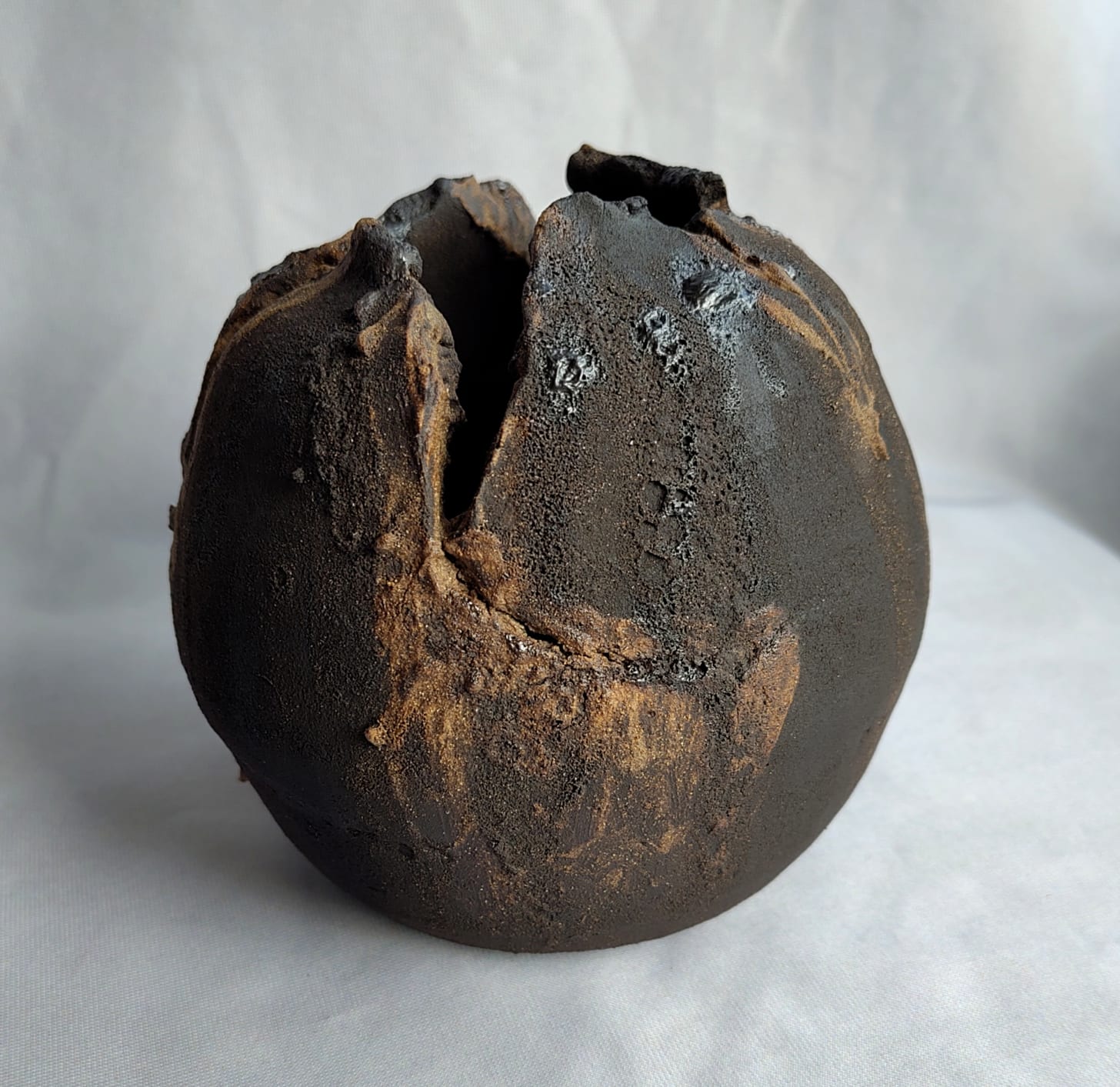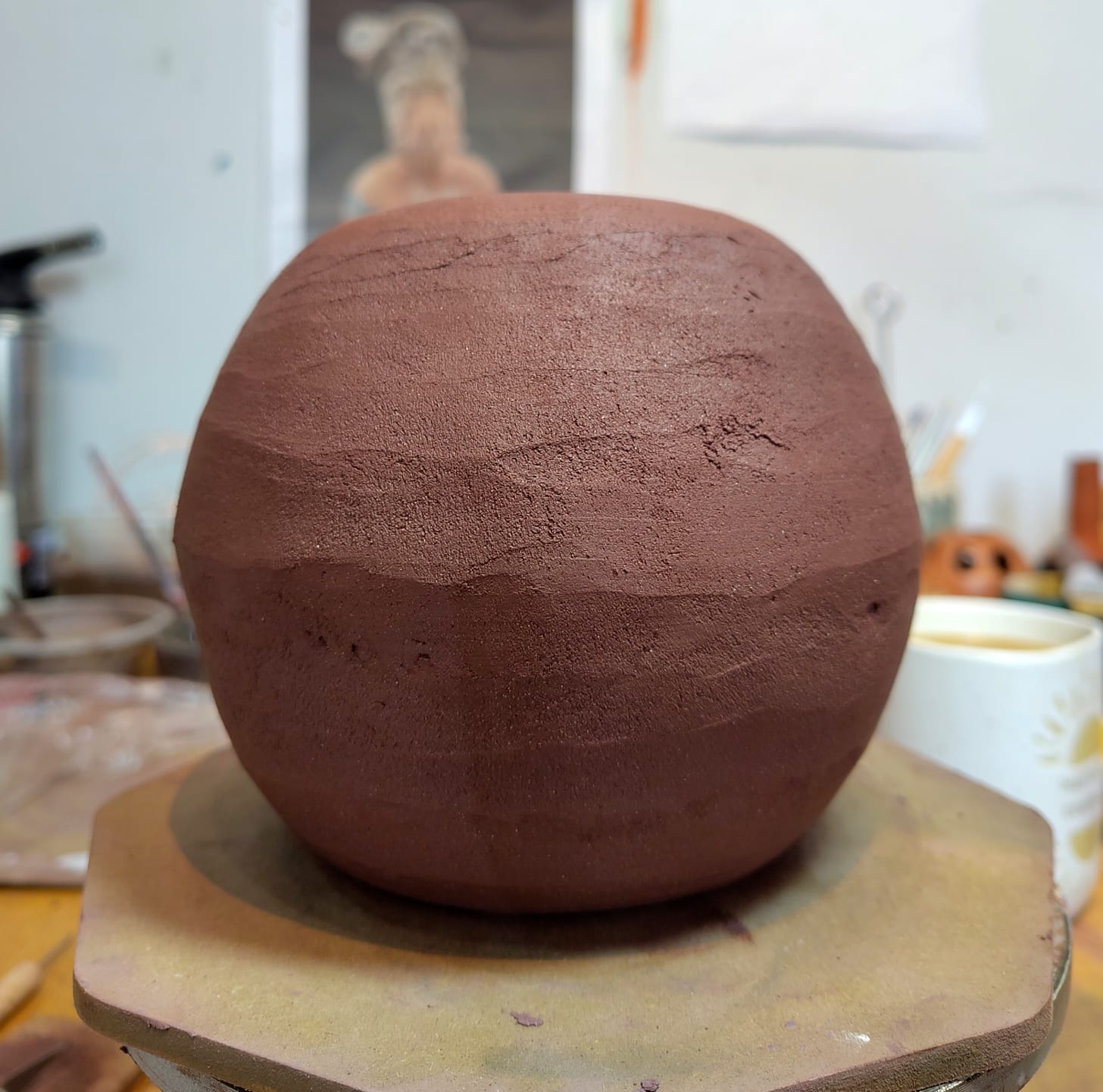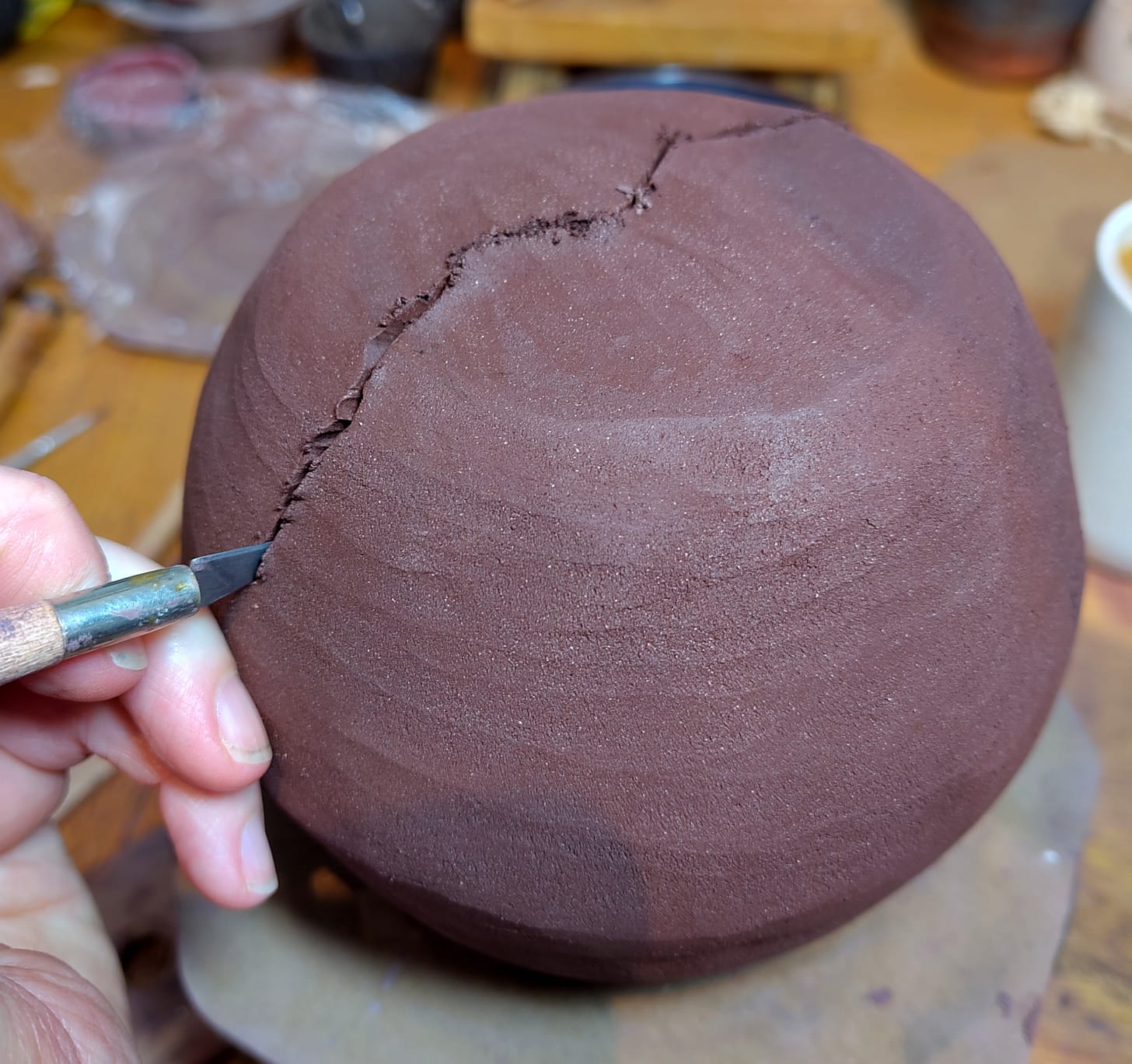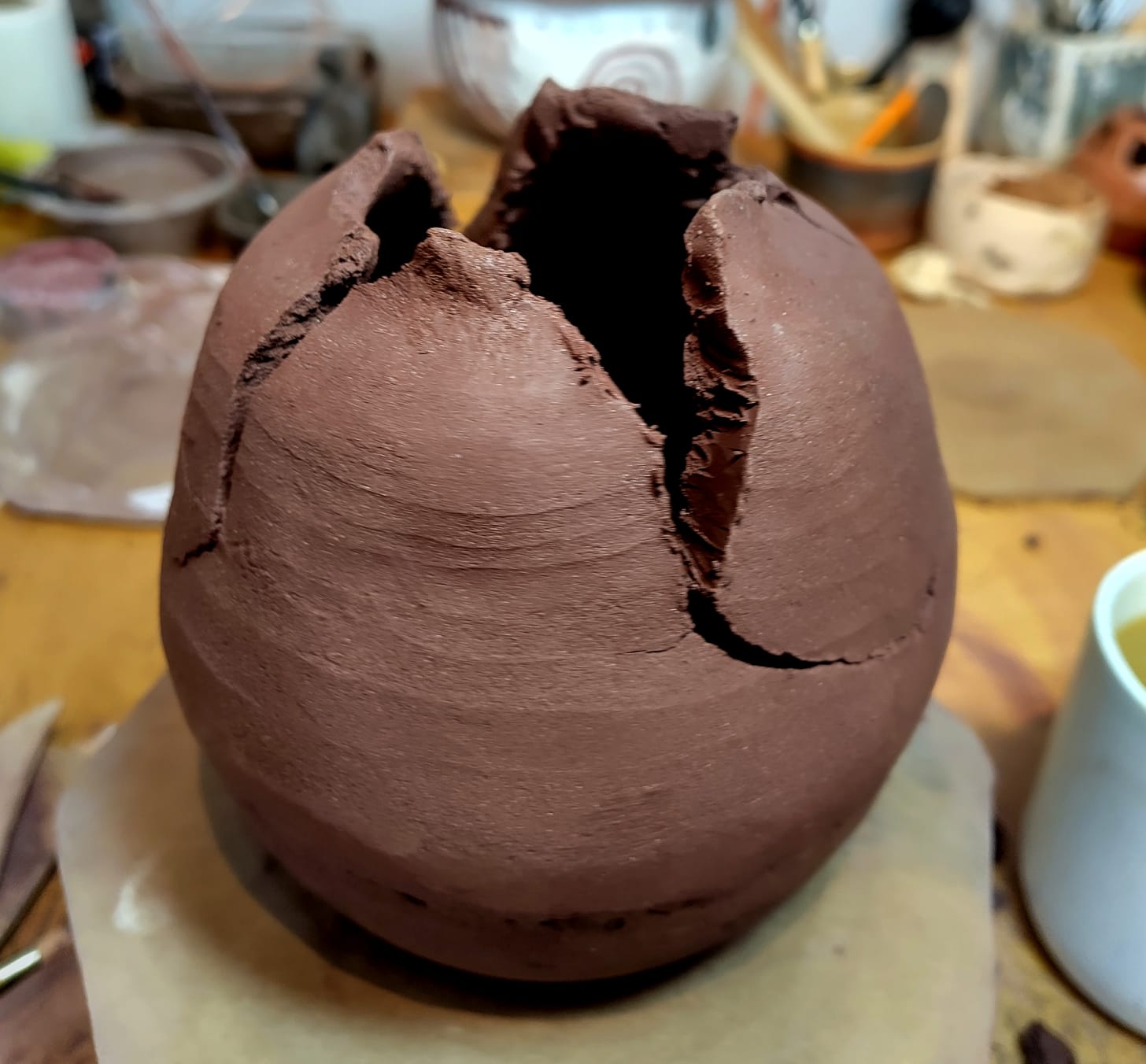My new collection, Emergence, explores concepts of new beginnings - of origins and the birth of new things. Follow the creation of one of my pieces from this collection, crack by crack, as it emerges like the earth’s own cycles or rupture and rebirth.
Let’s start with a definition - Emergence can be given as the process by which a complex entity has developed properties or behaviours that its parts do not have on their own, and emerge only when they interact together as part of that whole - The whole is greater than the sum of its parts, so to speak. With this collection I look to examine a few examples of emergent properties, to materials, to life to the concept of art itself.
The Chaotic Creative is a reader-supported publication. To receive new posts and support my work, consider becoming a free or paid subscriber.
The Birth of a Material
But before we start, we need to understand what we are working with - what exactly is clay? Clay is characterised by very fine particles of weathered feldspars, which are minerals formed by the crystallisation of magma (I.e. igneous rocks). As the earth cracks open magma spills to the surface where it becomes lava, flowing into the cracks and eventually hardening into new rock. Over millions of years this rock is weathered by the constant onslaught of wind, rain and sea until all that’s left is the dirt beneath our feet.
Cracks as Creation
With this piece I start with a basic form - an ovoid - a hollow egg like shell I make by bringing together two pinch pot bowls, one atop the other. I use a paddle to work the ball into a relatively uniform shape, but I leave it slightly uneven to retain its organic form. I scrape the surface to smooth out the joints around the middle and to give it some rough texture. Now, as I leave it to dry out a bit, to harden slightly, I can sit back and contemplate all the possibilities of what this brown ball of raw material might become.
Clay, it could be argued, is an emergent property - a collection of minerals - silica and alumina plus some others such as iron and magnesium - nothing but dust until you add just the right amount of water and bring it together in your hands. It then becomes, something new! A workable putty, capable of being moulded into any shape - it’s no longer just dirt, it’s a conduit, an instrument, a means to creation!
Once the piece is leather hard, like a surgeon with scalpel in hand I slice the egg open. The cut is purposely rough and jagged like the earth being ripped apart by an earthquake, or like the first crack to appear in a delicate shell as new life begins to break free. As I pull the sides away from each other the clay will crack unpredictably. The variations in thickness of the walls will naturally create areas of strength and of weakness facilitating the pattern in which the cracks will occur.
The large fissure at the top is the focal point of the piece - it represents the cracking open of the earth, both a destruction and a creation at the same time. A transistion from one form to another. The earth, like all things, is in constant flux, with both destruction and creation happening in a single breath. With every fracture comes a new structure, a new form, a new beginning.
Power of Poiesis
The moment at which a new entity emerges from its composing parts is called poiesis - a threshold event, so to speak, at which something moves from one thing to another - from raw material to an object, from an object to a work of art. Just as the heat and pressure of the earth can transform basic elements into solid rock, once fired in the heat of the kiln, the soft malleable clay becomes a new entity! No longer just a collection of microscopic chemical particles, but an object, an artefact, a reflection of the history of the planet, of the maker, and of the culture in which it was made. It becomes a permanent symbol of all that was and all that can be.
In this act of rupture and creation, the sculpture embodies life’s primal paradox: that creation demands destruction. The cracks are not flaws but requirements—traces of the clay’s geologic past and the symbol of its future. Like life emerging from inert matter, the work exists at a threshold, forever balanced between what it was and what it will become. It is the embodiment of emergence itself.

Emergence II - Stoneware Sculpture - Laura Timmis 2025
Where do you see emergence in your own creative or daily life? Let me know in the comments.
Laura x


